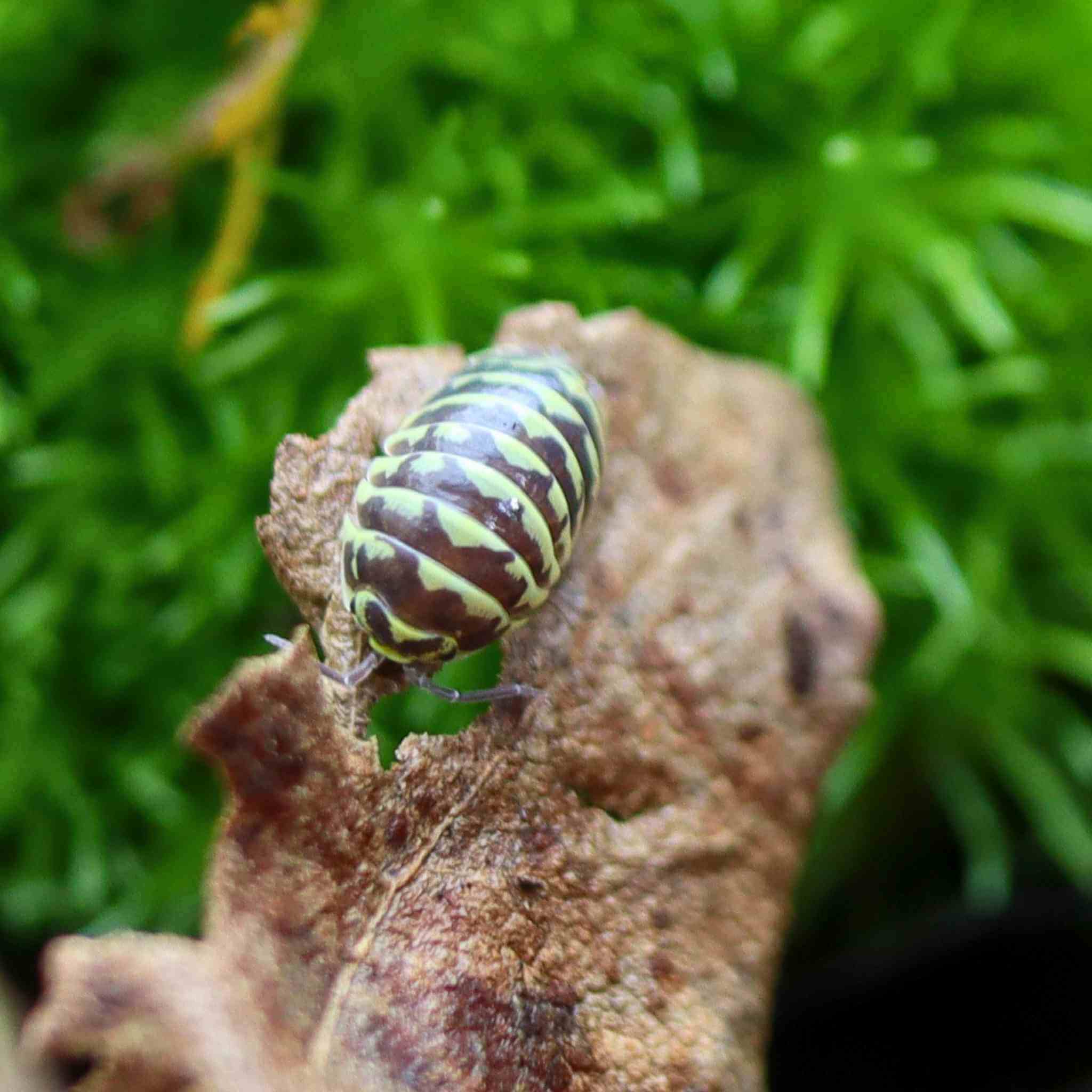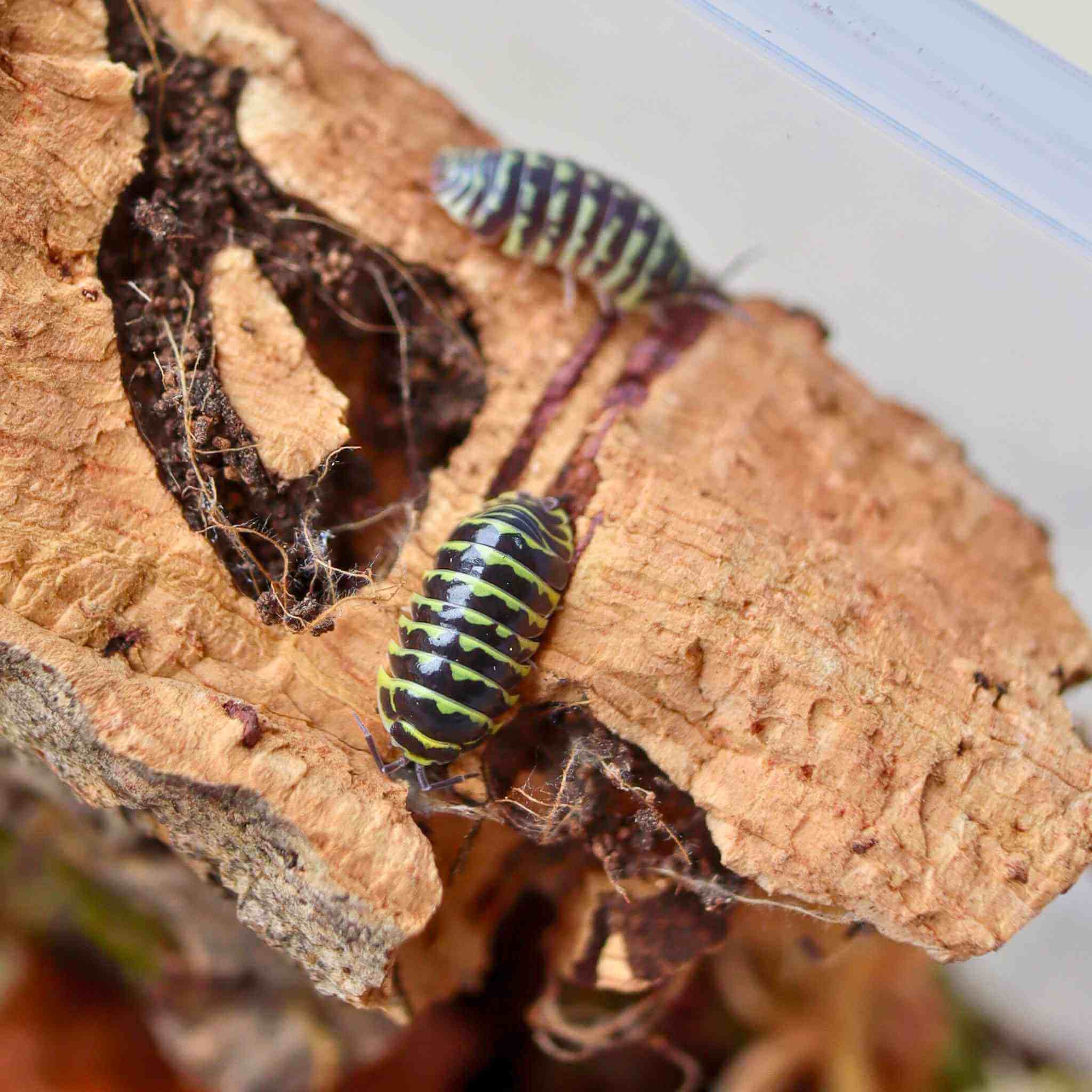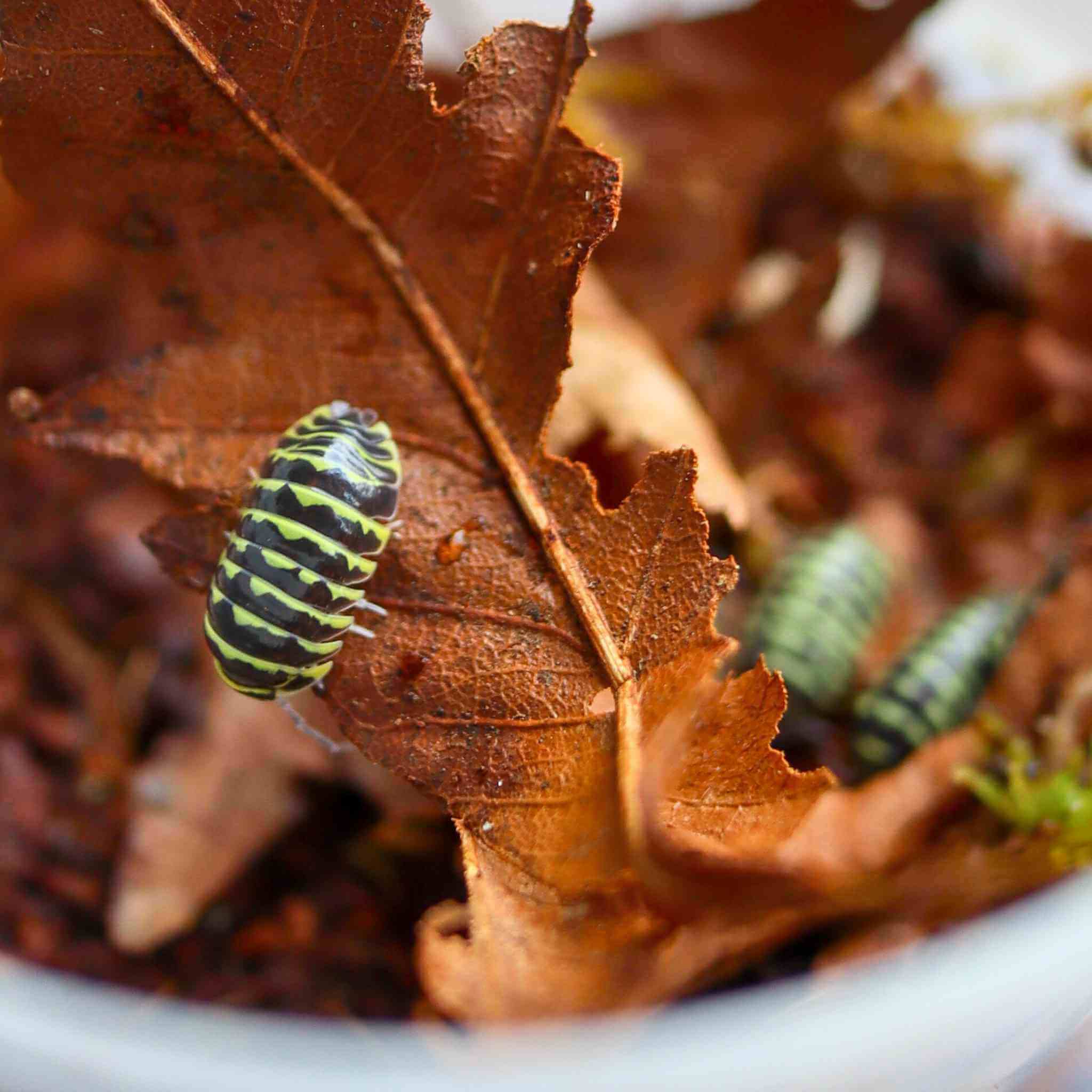




Yellow Zebra Isopods (Armadillidium maculatum) 10 Count
The classic Zebra Isopods you know and love, now sporting electric yellow stripes! Seriously, these isopods really pop against a natural terrarium/culture backdrop - they are gorgeous. Thankfully, they're still every bit as easygoing and reliable as their classic black-and-white cousins, and more vibrant than ever.
Get a head start on your culture goals! We exclusively ship adult designer isopods, so you can skip the wait to get them breeding.
📦 We ship live goods on Mondays & Tuesdays. Check out our live arrival guarantee! (+ how to qualify).

Yellow Zebra Isopods
Care Specs & Uses
Temperate | Semi-Arid
Pet
70-85º Fahrenheit
Low
1.5cm
Intermediate
FAQ
Yellow Zebra Isopod questions? We've got you.
Check out the most common questions our customers ask. Have questions about something else? See our dedicated FAQ page!
How do I care for Yellow Zebra Isopods?
See the care specifications above and check out our full guide to Zebra Isopods for more nuanced care advice.
Do I need to feed my isopods. How much/how often?
A staple diet of leaf litter is essential, so you’ll need to provide a regular supply. Zebra Isopods enjoy a protein-rich diet, so a pinch of our Superfood powder is recommended every 4 days. See our full guide to isopod food for more information.
Will these isopods eat live plants?
Armadillidium are often regarded as a species that likes to snack on soft plants. We have seen this ourselves, so we don't recommend adding these isopods along with your prized plants.
However, if you're using these as a cleanup crew in a more temperate/semi-arid setup, the plants are typically much hardier and likely won't be targeted.
Do isopods need ventilation?
Armadillidium species are typically regarded as having higher ventilation requirements than most isopods. That said, we've kept them in closed tropical terrariums too, and they've been absolutely fine.
When kept in culture boxes, our isopod partners, RDI, suggest that regularly opening for watering/feeding may still provide enough ventilation.
Alternatively, drilling holes in the (plastic culture) container is a popular method in the hobby, and these isopods prefer lower humidity anyway, so that is always an option (though it brings an increased risk of pests).
Do these isopods need water/moisture?
How frequently you need to spray your isopod enclosure will depend on the species, the setup, and the ambient humidity in your home. RDI recommends every 3-4 days as a loose rule of thumb, checking daily for the first week after receiving them.
Armadillidium species prefer a stronger moisture gradient in their enclosure (meaning they need to have both dry and moist areas available to them), so they may be more tolerant of dryer conditions overall.
What should I do when my isopods arrive?
We recommend opening your order immediately after it arrives and checking them over. For best results, put your isopods into their new home right away; we recommend gently tipping them in along with the contents of the tub.
If that’s not possible, isopods can stay in the tub they’re in for up to a week, provided they have a leaf litter supply and you open the tub up at least every 2 days minimum for air exchange.
How much space do isopods need?
A standard 10 count will need around a shoebox-size isopod enclosure.
What’s the difference between a pet isopod and a clean-up-crew isopod?
Clean up crew isopods are species selected for their large appetites and high activity, making them particularly good at breaking down and recycling organic matter in a terrarium.
Pet isopods are those that are especially interesting to look at, but waste management skills and terrarium suitability vary from species to species.


